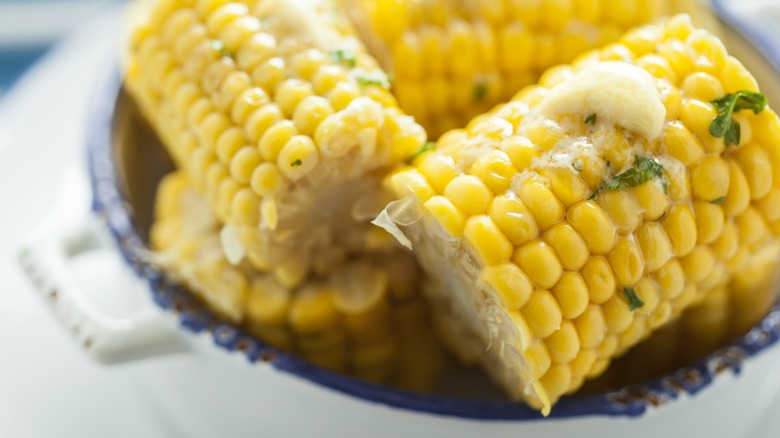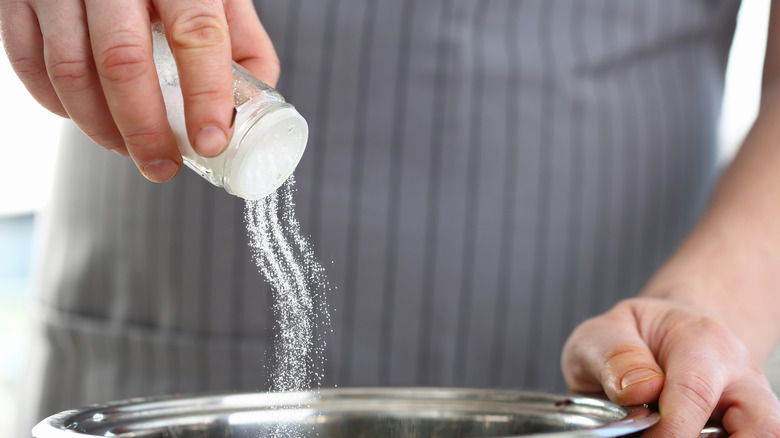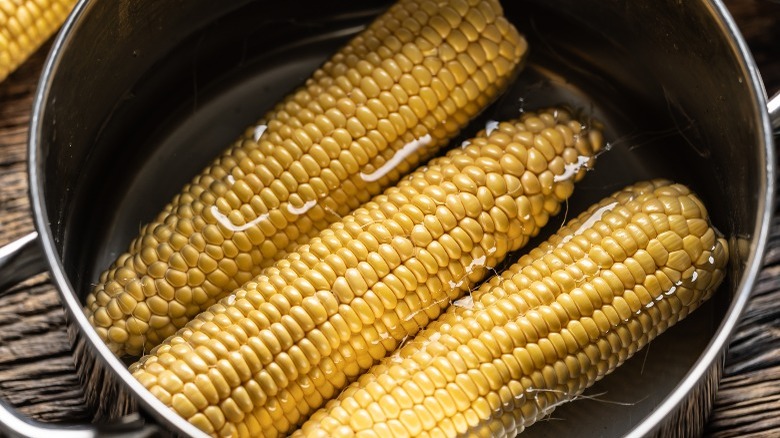The Salting Mistake You're Making When Boiling Corn On The Cob
If corn on the cob makes a frequent appearance at your dinner table, you've likely heard the conventional wisdom that salting the boiling water can yield tough corn. I'd say this is an old wives' tale, but it's more of an old culinary scientists' tale. It does make some kind of weird sense — after all, salt draws out moisture. That's what makes your properly brined eggplant Parmesan the perfect texture.
But when it comes to boiling corn on the cob, this no-salt warning is nonsense. To be sure, brining corn is a terrible idea — it results in a shriveled, unpleasant wreck of a veggie. But brining typically takes a while, up to several hours. Your boiled corn, on the other hand, will probably be in the boiling liquid for 30 minutes max, depending on your method.
Neglecting to salt the water just results in underwhelming corn with a less-satisfying flavor. That's unfortunate enough when you're talking store-bought corn on the cob. But the big, gorgeous, husk-on corn that comes from your local farmers market or agriculturally gifted neighbor deserves better.
Why salting the water matters
It's Cooking 101: Salt makes everything taste like its best self. But that's most true when your food gets the opportunity to let the salt become a part of it on a molecular level. Food with salt sitting on the outside tastes like food with salt sitting on the outside. No one who's ever had a fresh, hot chocolate chunk cookie topped with flaked salt can tell you that's a bad thing. But make no mistake, there's salt in that cookie, too, and it just tastes different than if the salt is on the outside.
Where corn is concerned, the best way to get the salt into the corn is to dissolve it in the water with the corn. That allows the salt to penetrate the corn kernels' hulls and seep into the crevices between them, intensifying the flavor and making the corn taste more vibrant — more like corn. According to tests conducted by Serious Eats' Daniel Gritzer, the salt probably doesn't get far into the kernel, but it does attach to the corn well enough to resist removal with water, indicating that it's 1) penetrating at least into the outer shell and 2) not entirely pointless.
How to salt your corn on the cob properly
The most flavorful corn comes from a 2% solution of water and salt, according to Daniel Gritzer. That means you need roughly 1 tablespoon of table salt per quart of water. The most effective way to imbue your corn with salt is starting with a cold pot. Boiling the cooking water is actually another mistake you're making with your corn. Much like potatoes, corn's texture and flavor are superior with a cold-start cook, and as a bonus, this also gives the salt time to penetrate the corn hull without too-hot water destroying it.
You can put the husked and cleaned corn and salt directly into the pot, then cover both with water. Stir the pot's contents around if you can, then let the water come up to 180 degrees Fahrenheit. At that point, cover the pot, turn off the heat, and let it sit for 10 to 25 minutes, depending on how well-done you like your corn. If you do like the uneven, salty flavor associated with salting foods on the surface only, slather unsalted sweet cream butter all over your flavorful cooked corn and hit it with a sprinkle of flaky salt to finish.


